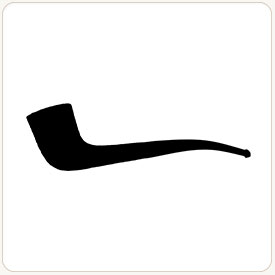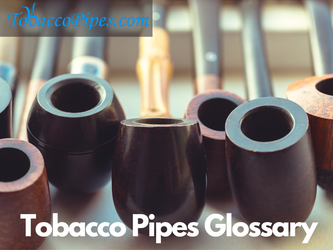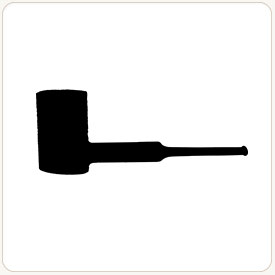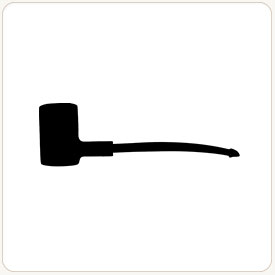Glossary of Tobacco Pipe and Pipe Tobacco Terms
Posted by Greg Rosenberg on 21st Feb 2023
Figuring out the world and culture of pipe smoking can seem complex. Just like any other hobby or practice in life, the right resources make developing a meaningful connection to the activity considerably easier.

When you dig into pipe smoking, you will quickly be bombarded by a vocabulary that seems like Greek to you. Even though context clues can help a little, it's helpful to have the definition a click away.
That is why we have compiled this pipe and tobacco glossary—to make pipe smoking easier and more pleasant for you. As well as the basic definitions, there will be links to related topics we've covered in more detail.
So, whether needing a quick refresher or definition, or want to take a deep dive, this should be a great resource to get you there.
| A | B | C | D | E |
| F | G | H | I | J |
| K | L | M | N | O |
| P | Q | R | S | T |
| U | V | W | X | Y |
| Z |
A
Acorn/Pear
The Acorn and Pear pipe shapes are synonymous. The outside of the bowl is conical shaped, tapering towards the base. There are no hard lines or angles around the chamber of the pipe. The rounding edges are the defining feature of an Acorn shaped pipe.
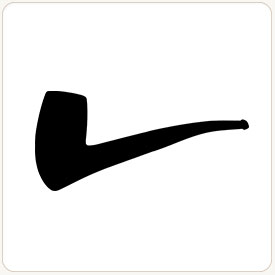
Acrylic
The two most common stem materials for pipes are acrylic and vulcanite. Acrylic, which you may hear called Lucite, is a very durable plastic. It is harder than vulcanite, so may be less comfortable in the mouth to some smokers, especially those who clench often. However, it is less prone to scratches and does not oxidize as vulcanite does, making it an easily maintainable material that keeps its shine.
See: A Guide to Pipe Stems - Acrylic
African Block Meerschaum
African Block Meerschaum is similar to tradition meerschaum found in Turkey. The difference is that it is slightly darker in color and heavier than tradition meerschaum. Pipes made from African block meerschaum are seldom seen today but they can still be found with a bit of effort. This material is mined from Tanzania.
Aging
Aging tobacco is the process of jarring or leaving a tobacco blend in an air-tight container to mature, what might be called "cellaring." Much like how wine ages, tobacco will develop over time. Different types of leaf age differently.
See: A Complete Guide to Cellaring Tobacco.
Agonya
Agonya tobacco is a strand of Kabakolak tobacco, under the umbrella of Oriental tobaccos. The sub-varietal is noted for its light and smooth body, and is cultivated near the Sea of Marmara in the region east of Kanakhale, Turkey.

Air-cured
Air-cured tobacco is the curing method most associated with Burley leaf. As soon as the tobacco leaves are cut they are hung in a shaded place—usually a barn—that is extremely well ventilated. Over a period of a few months, the tobacco turns from brilliant green to warm yellow and finally to an earthy brown hue. Once the tobacco leave reach the desired color, they are ready for either immediate processing or fermentation.
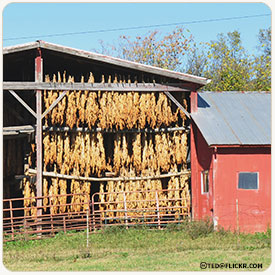
Amber
Before acrylic and vulcanite stems became popular in the late 19th century, amber was a common material chosen for the construction of a stem. Amber comes from the hardened resin of old trees. While the material is beautiful, it is brittle and hard. Amber stems require much more maintenance and care than the acrylic stems we see today.
American Blend
Though none of the blend types we commonly name in referring to a blend's genre are all that technical or tidy, "American" is especially vague. You may hear this term applied to a blend of Virginia, Burley, and Oriental; an English blend with a Burley base; or a Burley-based blend in the style of the classic over-the-counter (OTC) mixtures such as Sir Walter Raleigh or Carter Hall. Alternatively, you may hear "American style" used in some way to refer to generously topped Aromatic mixtures.
Apple
Apple-shaped pipe is a rounded, more spherical version of a Billiard. Depending on the curve of the shank/stem, you may see an Apple bowl referred to as a Diplomat or Prince—more specific varieties which tell us more about the overall silhouette, not just that of the bowl.
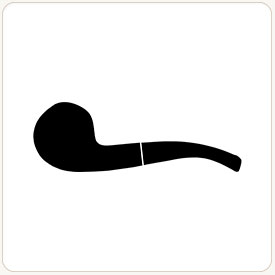
Army Mount
The army-mount stem is also known as the military style. These pipes are often banded with a thick metal ring of nickel or sterling silver. On an army stem there is no tenon. The entire stem is placed in the mortise, its tapered shape creating the tension holding the pieces in place. These army-mount stems can be popular for both their style and utility, as they're often said to put less pressure on the shank.
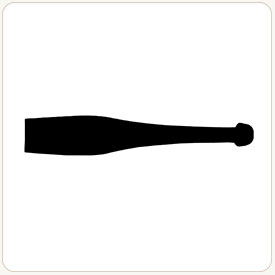
Aromatic
An aromatic tobacco is a mixture of components that have a liberal casing or top flavoring different than the natural tobacco. Typically aromatic tobaccos are sweet or fruity and have an excellent room aroma to accompany them. The top flavoring is different from "casing" which most all pipe blends have in small amounts. Some blends with more mild top flavoring may or may not be referred to as Aromatic, becoming more a matter of personal perception.
See: Best Smelling Pipe Tobaccos (10 Aromatic Mixtures).
Author
Author pipes are known for their large bowls, in comparison to most other pipes. The large bowl attracts many smokers who love to smoke for extended periods of time. Additionally, many pipe smokers attest to the difference in how a blend performs in a wide chambered pipe.

B
Bafra
Bafra style tobacco is the same as Samsun and is another sub-varietal under the Oriental umbrella. Often, Bafra has small red or brown smudges of color in the leaf. There is a naturally pungent odor that accompanies this tobacco. This blend has a decadently rich flavor.

Bakelite
Bakelite is a chemically complicated plastic that is a bit harder than vulcanite but is softer than a traditional plain acrylic. Technically bakelite is polyoxybenzylmethylenglycolanhydride. The material is usually an off-white or yellow color. It is a common choice for intricate bands.

Balkan blend
Another narrow blend genre with an unclear definition. Balkan most likely came into use to describe blends with a similar profile as the famous Balkan Sobranie. You'll mostly hear Balkan blends defined as a sub-genre of English blends, but with a significant ratio of Latakia or Latakia and Oriental leaf.

Band
A band is a ring of metal, acrylic, or some other material that is bound around the shank or stem of a pipe. Often purely ornamental, it may be used to reinforce the shank from the pressure of the tenon.
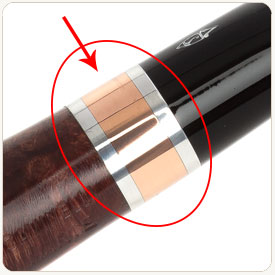
Basma
Basma is a tobacco grown solely in Western Greece and is a sub-varietal of Oriental tobacco. The stems of the leaf do not extend beyond the leaf of the main stalk.

Bead Line
A bead line is an engraved line usually running around the stummel. Bead lines are most commonly seen on bulldog and rhodesian shaped pipes, where there are two running parallel to one another. Bead lines are put into a pipe with a lathe. They were once much more popular than they are now, but are still used by some artisans.

Bent Pipe
Referring to a pipe as “bent” is a geometric phrase used to describe a pipe that has a curve or angle in the shank or stem. Sometimes a pipe may be described as full-, half-, or slight-bent depending on the significance of the curve. Bent pipes can be desirable for the downward weight distribution, often making for a more comfortable clench. However, some bent pipes are less amenable to passing a pipe cleaner.
Billiard
The Billiard shape is without a doubt the most popular tobacco pipe shape in the world. Billiards feature a perfectly cylindrical chamber and can be found with either a bent or a straight stem. The key to a classic Billiard is a cylindrical shank equal in length to the height of the bowl.

Birdseye
Birdseye refers to a type of grain that appears on a pipe when the straight grain has been cut straight across horizontally. The effect is a gorgeous dot and bubble pattern across the cut area of the briar. Birdseye pipes are highly collectable. Only a master carver can properly bring out the beauty of the birdseye grain.

Bit
The bit refers to the to the stem or mouthpiece of a pipe, often referring specifically to the very end opposite the tenon, or the "button."
Bite
There are two different definitions of bite:
1) When a tobacco smokes harsh, it can often be said to “bite” the tongue. This is often the result of an especially hot combustion, which can be the result of stoking to much, drawing hard, or especially dry leaf. It may also result from especially moist tobacco, often from top flavoring. The chemistry of one's mouth is also a factor—the blend that bites one tongue may be harmless to another. Tongue bite often feels like burning your tongue on a hot cup of coffee.
2) A bite, or bite zone, is the part of a stem where the teeth meets the pipe. It is generally the last quarter of the stem that goes into the smoker’s mouth.
Bloom
Also known as plume, bloom is a white colored substance that appears on the outside of aged tobaccos. There is much debate on the actually source of bloom, said to be a form of mold, crystalized sugar, or the crystallization of casing. It is often seen on cigars but also aged pipe tobacco, especially flake. If you're unsure if you should smoke tobacco that has bloom, keep in mind, if it wipes away easily it's likely bloom and if it looks more fuzzy than crystalline, it's likely mold. Ultimately, exercise your best judgement and precaution.
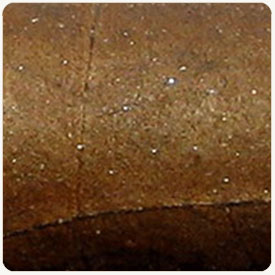
Blowfish
The most important feature of the Blowfish shape is the briar’s grain pattern. The sides of the bowl are large and round and will always have a birdseye grain, while the front and backside of the bowl has a straight grain running perpendicular through the tobacco chamber. To imagine a Blowfish, picture a bundle of pipe cleaners held out in front of you. The birdseye grain is the end of each cleaner, creating a popcorn style pattern, and the straight grain is the length of the cleaner running left and right of your position.

Bowl
Bowl is a loose term that may be used to describe the chamber, the part of stummel excluding the shank, or the entire stummel.
Bowl Coating
Many pipe makers apply a material that coats the inner walls of the chamber, usually to promote smooth smoking and a proper build up of cake. The bowl coating also reduces the odds of a burnout. Whether or not to use a bowl coating is a controversial issue and there are valid opinions on each side.
See: How to Break in a Tobacco Pipe
Brandy
The Brandy-shaped pipe was designed to look a brandy glass. The bulging shape of this pipe makes it comfortable and easy pipe to hold in the hand. Imagine a Billiard shaped bowl, but with a sizeable chunk of briar left on the front of end of the bowl, giving it that rounded brandy glass look.

Breaking In
Breaking In is the term used to describe the process of preparing a new pipe for regular smoking.
Not all types of tobacco pipes require a break-in process. Many pipes are pre-treated. Meerschaum and clay pipes don’t need any type of breaking in. However, most pipes made of wood or corn cob should go through a break-in process.
See: How to Break in a Tobacco Pipe
Briar
Briar is, without a doubt, the most popular choice of material for pipe makers. Technically speaking, briar is the root, or, burl, of the Erica Arborea tree, which is almost solely grown in the greater Mediterranean region. The burl of the tree are harvested when they are around 30 years old. Then, they are dried out, cut, and shipped to pipe carvers around the world. Briar is an excellent material for pipe making because it is light, durable, and less prone to burning. It also gives the stunning grain patterns cherished among pipe collectors.
Brindle
Brindle may also be referred to as cumberland-style stem. Brindle-style stems were made popular by the Cumberland line from Dunhill (hence the nelogistic name). A brindle stem is made by adding different pigments to the raw vulcanite material, leaving a beautiful multicolored design.
Brylon
Brylon is a cheap alternative to briar which was used for pipemaking, but no companies to our knowledge continue to use it. This man-made material was invented in 1966 by S.M. Frank & Co., and was mostly used for Yello Bole and Medico pipes. The material is a mixture of sawdust, typically briar sawdust, and acrylic resin. While the end product is durable, many smokers feel that it smokes too hot and can even burn the hand.
Bullcap
The Bullcap shape is not very common, but is growing in popularity among individual artisans around the world. The largest difference between a Bullcap pipe and other pipes in the Bulldog family is the addition of a saddle bit stem, as a pure and correct Bullcap will always have the saddle stem.

Bulldog
To envision a bulldog-shaped pipe, imagine the larger sides of two cones rests on top of each other. Then, the small half of the top cone is cut off. The twin bead lines running parallel across the bowl characterize a pure Bulldog. For a Bulldog pipe, the smooth bottom of the briar bowl always transitions to a diamond shaped shank with edges pointing up and down.
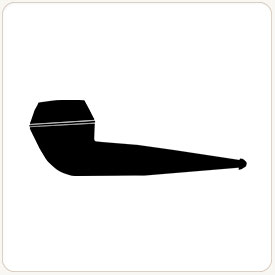
Bull Moose
The easiest way to picture a Bull Moose is to compress a Rhodesian from the top. The chamber walls are significantly larger and the chamber is shortened by as much as twenty-five percent. In addition, the shank is considerably beefed up. The length of the tapered stem is trimmed down, which makes this pipe short and fat in every aspect.

Burl
The burl is the tumor-like knot of wood that comes from the roots of the Erica Arborea shrub, what we call briar wood. The burl is cut into chunks and sold to pipe makers for carving.
See: What is Briar Wood Used For Tobacco Pipes?
Burley
Burley is one of the most common tobaccos in the world. Used mostly for cigarette production, this component is grown almost solely in Kentucky and Tennessee. It is notoriously air-cured. Burley naturally has a low sugar content and must be sweetened to fit the needs of most blends. It imparts subtle flavors, often described as woody and nutty, brings a significant nicotine content, and takes on abutting flavors well, making it a popular candidate for stoving into Black Cavendish.
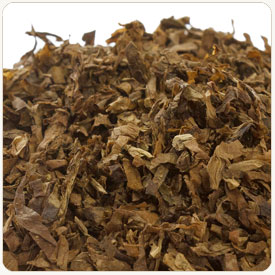
Burnout
When there is a spot of char that continues to penetrate deeper and deeper into the briar of a pipe, the result is called a burnout. Generally, when the outer layer of briar is penetrated deep, that pipe will no longer smoke properly. Some minor cases of burnout can be restored by the hands of an expert pipe restorer. Usually a burnout occurs when a smoker smokes the same pipe too hot for too long or can also occur from a natural imperfection in the pipe.
Button
The button is a raised lip at the tip of the stem. The button makes the pipe easier to hold in the teeth without it slipping out. The button receives particular attention from pipe carvers, for many this is the most crucial point of contact on the pipe.

C
Cake
Cake, or carbon cake, refers to buildup of carbon around the chamber walls of a pipe. This helps insulate pipes so they don't burn to hot or are damaged from combustion on bare briar. Not all pipes need a cake, and pipe smokers preferences vary, but if you keep a cake, it may need trimming from time to time, i.e., reaming.
See: How to Ream a Tobacco Pipe
Calabash
The Calabash is a bold and eccentric pipe shape which came into popularity out of necessity during the Second Boer War in the late 19th century. The Calabash, crafter from a hollowed gourd, was a convenient alternative for the soldiers stationed in southern Africa, where the gourd pipes had existed for centuries. After the war, they became a bit of a novelty and though not especially common, remain prominent pipe shapes. These days Calabash pipes are generally carved from briar or meerschaum and feature meerschaum caps—the bowl which fits into the stummel opposite the shank-end.

Canadian
The Canadian pipe shape looks an awful lot like a Billiard going by the bowl alone, but it's the length and shape of the shank and stem that distinguish it. In order for a shape to be deemed a Canadian, the length of the shank must be at least one and a half times the height of the bowl, but cannot exceed double the length. In addition, a traditional Canadian will always have an oval shaped shank and a tapered stem.
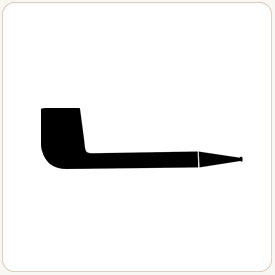
Carnauba
Carnauba is a vegetable wax derived from the fronds of copernicia cerifera, or carnauba tree, a Brazilian native tree. Pipe makers often use this wax to coat the outside of their creations. It shines, is difficult to dull, and handles the heat of smoking well.
Casing
A casing is a spray or sauce applied to unfinished tobacco. A casing is usually used to sweeten a tobacco. In contrast, top flavor is the addition of scents and flavors to the blend at the finish. Though top flavoring is associated with Aromatic blends, casing is used in most any tobacco. It is more used to balance and sweeten the tobacco's natural taste.
Cavalier
The Cavalier shape is unique because the air hole in the shank continues past the chamber, down into the shank extension. This feature traps the moisture of the tobacco in a cavity, which needs to be regularly cleaned. This keeps illicit moisture away from the tobacco and the smoker’s mouth. It is this moisture chamber that defines a Cavalier-shaped pipe.

Cavendish
Cavendish most traditionally is understood to be a tobacco that has gone through a process of applying steam, heat, and pressure to stove the leaf. In the States, Burley is often used, Virginia in Europe. You'll more often hear "Black Cavendish," which has been through the same process. The words are more-or-less synonymous, but perhaps one may be preferable depending on the degree to which the leaf was stoved, as the process blackens the leaf. Cavendish is a popular varietal for Aromatic blends, as the stoving caramelizes sugar and neutralizes much of the natural tobacco flavor, making it a great vehicle for toppings. It can also be a great addition for soothing the rough edges of a blend, adding body, or attenuating burn rate.
See: Embracing Ambiguity - A Deep Dive into Cavendish Tobacco
Cellar(ing)
A pipe smoker's cellar is essentially their stash of aging tobacco. The name belies the simplicity of a "cellar," which could be as simple as a storage container of tins and/or jars kept in a closet. Pipe tobacco, unlike cigars, doesn't ask for very specific storage conditions, as long as it's kept in a dark place, at a consistent room temperature, without too much humidity, it will keep. Most pipe smokers already have such conditions in their home (though if you live in a particularly humid environment, some extra conditioning may be necessary).
See: A Complete Guide to Cellaring Tobacco.
Chamber
The chamber is where the tobacco is placed in a pipe. The term chamber and bowl are often used interchangeably, but bowl more often will be used to refer to the entirety of the part of the stummel aside from the shank, where as chamber will more often refer to the interior.
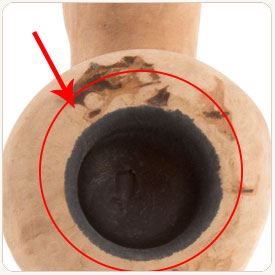
Char
Char is a common term and refers to the early stage of burning which blackens the wood. This usually happens along the rim of a pipe due to excessive flame from a lighter. Be sure to use a soft flame and avoid contact with the rim to prevent discoloration.
Char light
The char light is a technique for lighting a pipe. Once packed, some recommend lighting the leaf while giving a few puffs. The leaf will likely rise to the heat. Then instead of continuing to smoke, tamp the tobacco level and wait a minute or so before relighting. This is said to facilitate a nice even burn as you smoke.
Cherrywood
The Cherrywood and the Poker pipe are very similar, but the Cherrywood features a subtle attractive bend leading to the cylindrical, flat bottomed bowl. The shank of the Cherrywood is typically slightly shorter than the height of the bowl.
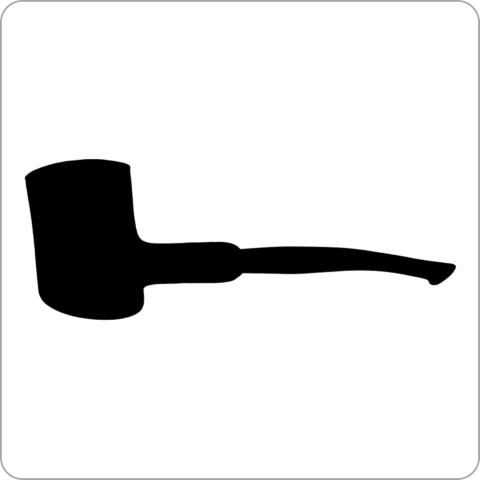
Cherry Wood
At one time the wood of a cherry tree was popular for pipe making. Since the popularity of briar has emerged, the use of cherry in pipe has decreased dramatically. Many novice carvers practice pipe making with the wood of a cherry tree.
Chimney
The Chimney is pretty self-explanatory. The tall bowl looks like the chimney of a grand estate, especially when smoke is billowing from the chamber.

Churchwarden
The term " Churchwarden" doesn't so much refer to a pipe shape as it does to the length of the pipe. Essentially it's a long pipe which we often associate with wizards. Curiously, in The Hobbit, Gandalph's pipe is small, whereas Bilbo's pipe is described as reaching down to his hairy hobbit feet. But no doubt, modern adaptations have forever married the wizard with the long Churchwarden. The pipes used for the movies were actually crafted by Vauen, who have created their own line of Tolkien inspired pipes—the Auenland series.
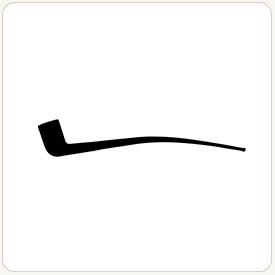
Clay
The first tobacco pipes were made from clay. There are two styles of clay pipes: hand-rolled—which are shaped by the hand of a master potter or carver—and slip cast, which are molded like plaster into a cast. Clay pipes burn hot, but are still used by many smokers today. Clay pipes are popular for historical reenactments and as “tasting” pipes, as they impart a neutral taste.
Clencher/Clenching
Clenching simply refers to the act of holding the pipe in one's mouth, keeping the hands free. With that in mind, you can probably figure out what it means for a pipe to be described as a "good clencher." This will usually be a pipe that is particularly light, has a downward weight distribution from a bend, or has a soft stem material (usually vulcanite). Basically, whatever might make the pipe more comfortable to clench.
Coin Cut
May also be called twists, rolls, medallions, spun cut or curly cut.
A coin is a single slice of tobacco which is cut from a twist or a rope of tobacco. In principle, a coin cut is the same as flake cut tobacco, just circular instead of rectangular and is often thinner. Sometimes the rope will be spun in layers with different tobaccos, giving the coin a bullseye of a particular varietal such as Black Cavendish or Dark-Fired Kentucky.
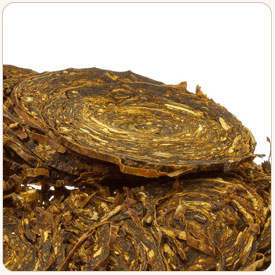
Coloring Bowl
A coloring bowl refers to an auxiliary meerschaum bowl that is placed in the chamber of a meerschaum pipe to facilitate more even coloring in the pipe. As you might know, meerschaum that is made from genuine block meerschaum will take on a beautiful golden shade as it's smoked more and more—a point of pride for the owner, as a sign of all the wonderful smokes the pipe has delivered.
Depending on the shape of the pipe and other factors we simply can't account for, meerschaum pipes will often color in concentrated areas, often the foot and the shank. Some will opt to use the coloring bowl, as it's meant to make that patina develop more evenly.
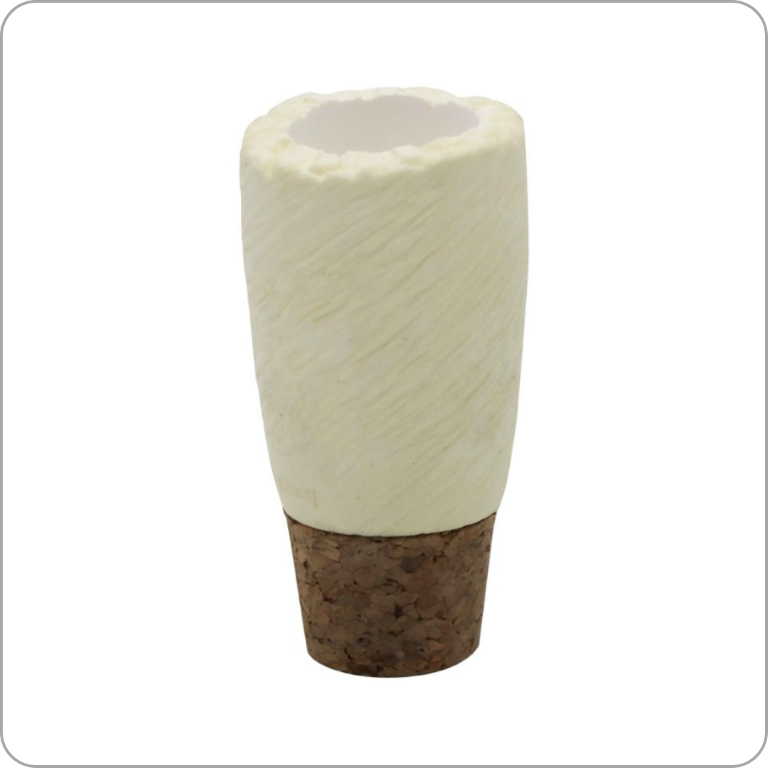
Combination Finish
A pipe is said to have a combination finish when it has multiple textured finishes on the stummel.

Combination Stem
This is a melding of the tapered and saddle style stems. For a combination stem, the tenon, mortise, and immediate stem shape is identical to a saddle stem. The difference is when the stem “drops” off the shape is no longer flat, instead it is tapered. The combination stem is saddle in the front, tapered in the bit.

Corn Cob Pipe
Usually referred to just as a “cob”, this is the cheapest and most available material for tobacco pipes, aside perhaps from clay. The interior of an ear of corn is hollowed out, dried, and sometimes coated in a protective resin or wax. Many smokers prefer their cobs to other pipes, claiming that they smoke dryer and cooler than all others. They also make the perfect "knock-around" pipes—those that we can use in situations where perhaps we don't want to risk a nice briar, such as yardwork or hiking.
See: Corn Cob Pipes: 7 Reasons to Try One
Cross Grain
A tobacco pipe with a cross grain has bird’s eye grain on the sides and a straight grain running through the top and bottom. A great example of a cross grain pipe is the blowfish shape.

Cube Cut
Cube cut is a style of cutting tobacco. The name is fairly self-explanatory, as the tobacco has a cube shape. To make cube, a cake of tobacco is diced into evenly sized chunks.

Cumberland
A Cumberland stem is one made of vulcanite or ebonite with multicolored pigment added which creates a marble-like visual texture. Modern artisans often use other vibrant colors, besides the traditional red and brown, to create this effect.
Cumberland-style stems were made popular by the Dunhill. Brindle is another name for these stems, Cumberland being the name of the Dunhill line that popularized the style. The name stuck and while both are used today, you'll more like hear these referred to Cumberland stems, no matter the manufacturer.
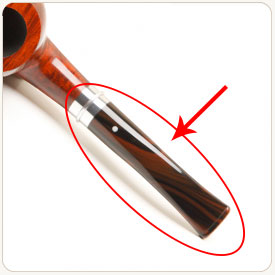
Curing
Curing is the process of drying tobacco after harvest, but there are different processes for this that will affect the chemistry of the leaf. All tobacco must go through some form of a curing process. Tobacco can be fire-cured, flue-cured, air-cured, or sun-cured.
Curly Cut
Another term for Coin Cut.
Cut
Cut refers to the format of the tobacco in terms of the dimensions to which it's cut, and how it is pressed, if at all.
There are seven common cuts for pipe tobacco. They are:
-
Ribbon - By far the most popular cut, ribbon refers to small strands cut by a machine. Within ribbon there can be more descriptive labels such as shag-cut or broad cut.
-
Cake - Often called crumble cake, refers to ribbon that has been pressed into brownie-like blocks or slabs, which easily crumble apart.
-
Plug - Similar to cake, and may even be used interchangeably, depending on the manufacturer. Traditionally, plugs are more densely pressed and may be comprised of whole leaf as opposed to pre-cut ribbons. When this is the case, you'll likely want a knife to slice off a piece to prepare for packing.
-
Flake - refers to slices cut from larger cakes. This cut is popular for its versatility. Straight Virginias and Virginia/Perique blends are often presented this way.
-
Broken Flake - May also be referred to as ready-rubbed, this is flake that has already been partially rubbed out, so while it's not totally broken apart, the strands are loosely held. They're convenient as some prefer partially rubbing out or layering different consistencies.
-
Coin - Refers to a blend that is sliced from twists, ropes, and navy plug. Coins are fairly uniform circles that can be stacked, rubbed out, or folded for packing.
-
Rope - The name is apt, Ropes are long cylindrical cords that must be sliced and rubbed or folded before smoking.
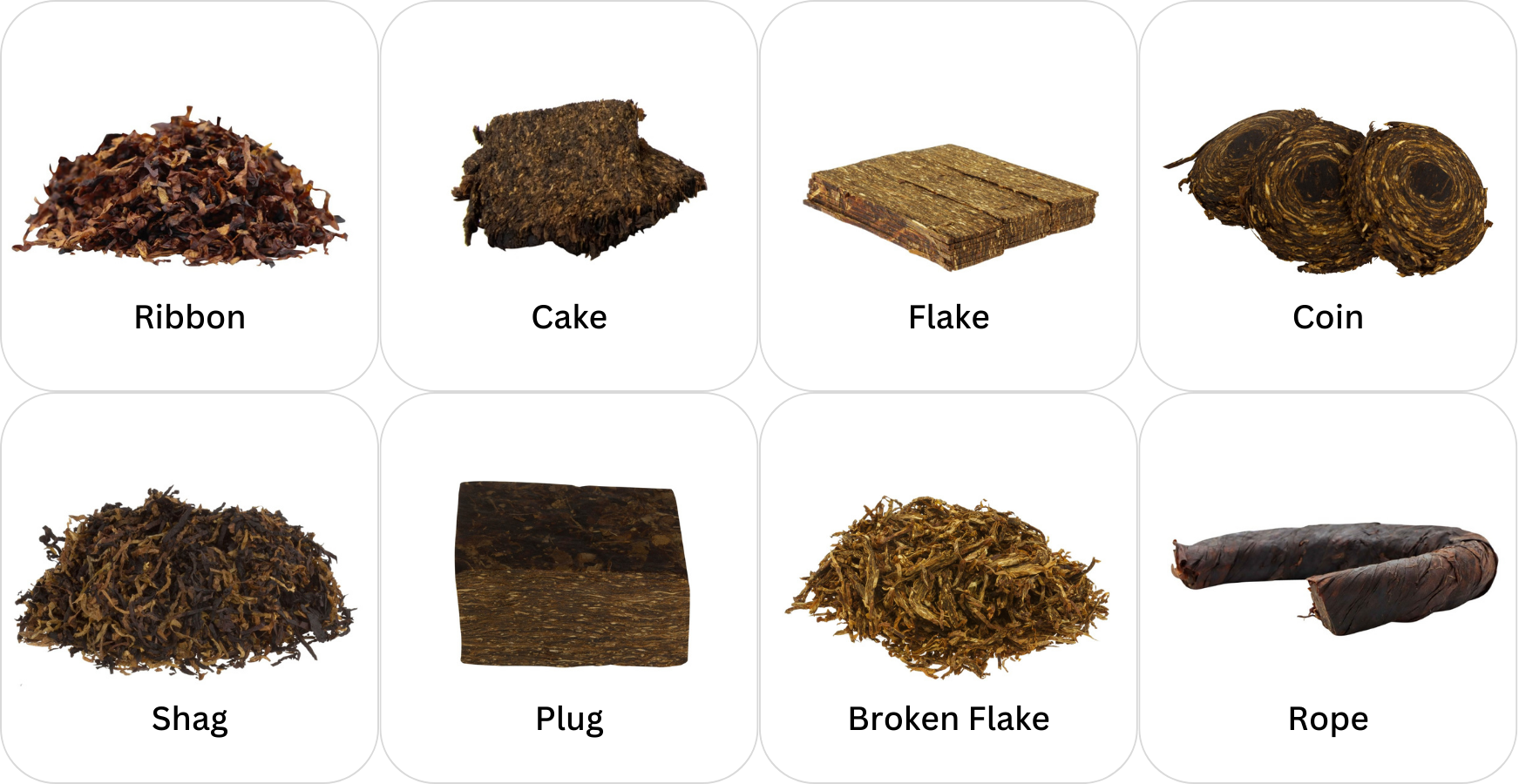
Cutty
The Cutty has a conical shaped chamber and is most noted for its spur protruding at the bottom of the bowl. The largest difference between a Dublin, whose family the shape falls in, and a Cutty is that while a Dublin has evenly thick chamber walls that move down the bowl, the Cutty has more of a rounded shape. It is often associated with clay pipes, but will be made from other materials as well.
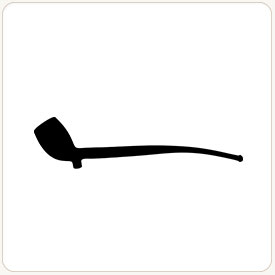
Czech Tool
A Czech tool is likely the most common pipe tool. A traditional Czech tool is a three-in-one piece containing a tamper, a dottle shovel, and pick for clearing the air.
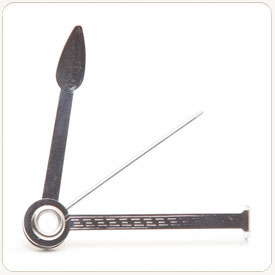
D
Dark Burley
Dark Burley refers to a Burley lead that is "heavier" than its counterpart, White Burley. Which is to say, Dark Burley has a higher nicotine content and bolder flavor (relative to White Burley, that is. It is still one of the more subtle varietals flavor-wise). Just like White Burley, Dark burley is air-cured but there are some differences in the process before and after curing. Dark Burley is picked from center stalk and above and is picked later in the season. It is thicker, allowing it to go through a second fermentation process.
Dedicating
Dedicating a pipe refers to the practice of having certain pipes dedicated exclusively to certain blend types or even one particular blend. This is done to account for the ghosting of a pipe. Ghosting is when certain blends leave a leftover taste in a pipe, affecting the flavor of future smokes. This is usually attributed to flavor heavy varietals such as Latakia or Perique, or generously flavored Aromatics.
Further reading:
Delayed Gratification Technique
DGT is the act of smoking half, or roughly half, of a bowl of tobacco then leaving the rest to o sit for a few hours or even a few days before finishing. Many tobaccos have a slight change in flavor when allowed to sit partially smoked, and many smokers prefer to smoke their tobacco in this manner.
Delrin
Delrin is the short term for the plastic often used by pipe makers to construct the tenon. Delrin is technically polyoxymethylene, also known as acetal, polyacetal, and polyformaldehyde. This plastic material is strong, durable, has a low moisture absorption rate, and has low friction, which is quite valuable for a pipe tenon.
Devil Anse
Evolved from the Cutty shape, the Devil Anse is generally shorter and lighter and doesn't have the spur at the base. The Devil Anse is a straight-stemmed pipe which sports a forward canting bowl. The bowl is more spherical in nature than the Cutty pipe, which is quite tall.

Diplomat
To make a Diplomat, an Apple bowl is squashed, by as little as an eighth of an inch. An oval-shaped shank—roughly as long as the bowl is tall—is added. The larger size of the Diplomat bowl is what makes is the preferred pipe for smokers. The difference between the Diplomat and other Apple family pipes is that it does not have as perfect of a sphere.

Djebel
In many cases this tobacco is referred to as Xanthi-Djebel. This is another sub-varietal in the Oriental family. Djebel is used mainly for cigarette production but is often added to pipe tobacco blends. Djebel is grown near the base of the Rhodope Mountains of Bulgaria above the town of Xanthi. A djebel is a range of mountains or hills, and is where the name of the tobacco comes from.
Dottle
The term dottle refers to the unburnt tobacco and ash left over in the heel of the chamber after smoking a bowl of tobacco.
Draft Hole
The draft hole refers to the point where the bore of the air chamber meets the tobacco chamber of a pipe. The draft hole is usually centered at the back of the heel, but can be elevated in certain situations.
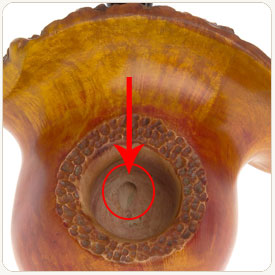
Drama
Drama is another sub-varietal in the Oriental family. Drama is grown in Rhodope Mountains in eastern Greece, and is named after a town in the area. The tobacco is said to have an olive oil fragrance. Drama is a member of the Kabakolak variety, meaning it has wing-shaped stems on the leaf.
Dublin
The dimensional standards for a Dublin pipe are open to interpretation, making it a shape we see with endless variations. The most significant characteristic of a Dublin is the conical shaped bowl and chamber—the chamber tapers to a smaller diameter down the bore.

Duke/Don
The Duke shape has a perfectly cylindrical bowl and chamber with lines, each parallel to one another. The foot of the bowl has been cut flat at a slight angle, redistributing the weight, allowing it to sit upright effortlessly. What separates the Duke from most other tobacco pipes is that there is no briar shank, either a vulcanite or bone two-piece stem is attached to the mortice by an inserted aluminum band.
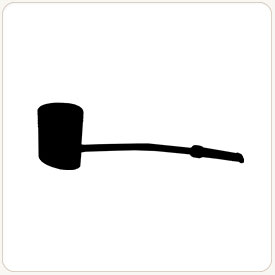
E
Ebonite
Chemically speaking, ebonite and vulcanite are the same material—hard vulcanized rubber. Ebonite received its name from a material it was designed to replace and occasionally imitate, ebony. This stem material is often hand-cut by artisans and is used in many high level pipes. Ebonite and acrylic are probably the two most prominent materials used for stems now. Ebonite stems are softer, having more give which makes them comfortable for clenching. However, depending on their quality, ebonite amy build oxidation, unlike acrylic.
Egg
An Egg-shaped pipe is a tall and elongated pipe. It often features a more narrow chamber than fellow pipe shapes in the Apple family. It often features an elegant, unpronounced curve you can follow from the the bottom of the pit to the fair end of the rim.
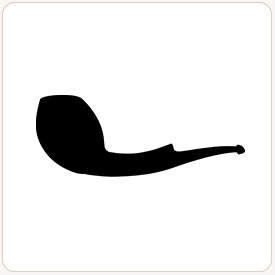
English
There are many different opinions on what constitutes an English blend. What is agreed upon is that the blend contains a significant amount of Latakia. English blends contain varying amounts of Virginia (sometimes used as the base) and Oriental. The term “English” has its roots in the now dead Tobacco Purity Laws, the conventional wisdom being that such flavorful leaf as Latakia and Oriental (once referred to as aromatic for it's natural flavorfulness) defined English blending in the absence of other flavoring methods.
There is an idea of an English blend being any blend that doesn't use top flavoring, but this broad definition has largely narrowed to just blends with Latakia.
English Cavendish
English or European Cavendish differs from that which is used in the states, as it is traditionally Virginia that is used as the source leaf which goes through the Cavendishing process. When we see "Black Cavendish" from an American blending house, it is almost surely Burley based. When American blenders do use Virginia based Cavendish, it is generally referred to as a Stoved Virginia.
See: US and English Style Cavendish
Estate Pipe
An estate pipe is a smoked or an unsmoked pipe that has been previously owned by another pipe smoker/collector. The term estate pipe is widely used to refer to a pipe that is not purchased brand new.
F
Ferrule
The ferrule on a tobacco pipe is an ornamental material at the end of he shank. This could be bamboo, wood, horn, or some other material. This is distinct from a band in that the section doesn't fit to cover the end of the shank, it extends from it.
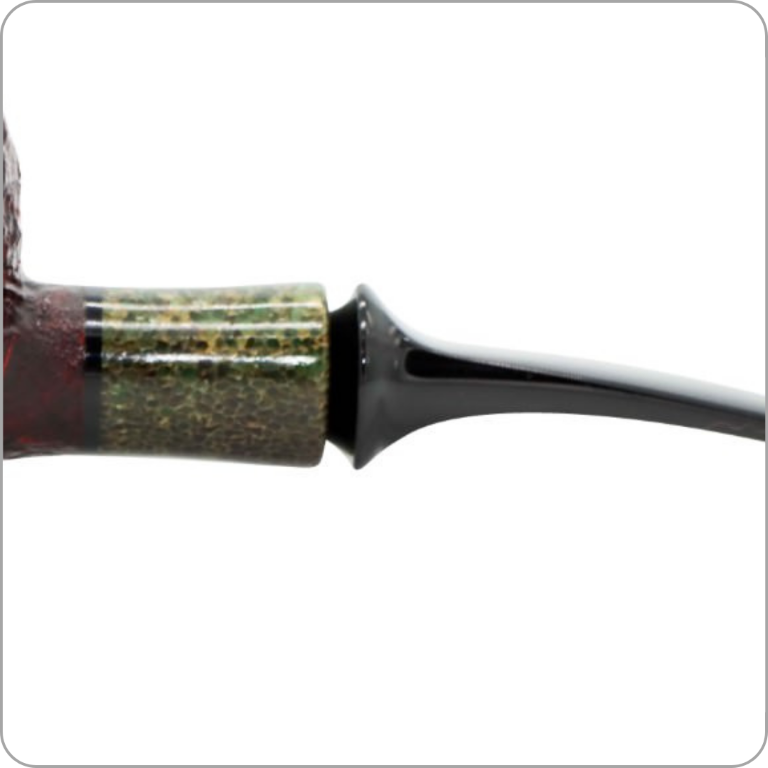
Fill
Occasionally a pipe, especially a briar pipe, will have a hole or a void in the material. This is a natural and common occurrence that is purely cosmetic and doesn't affect the smoking quality. A fill is used to fill in the hole. For higher end makers or lines, the blemish would lead to sandblasting or rusticating the pipe.
These holes are filled with a putty or some other material. These fills are for aesthetic purposes and are not detrimental to the function of a pipe.

Filter
There are many different types of filters that may be used in a tobacco pipe, which are usually meant to reduce moisture, nicotine, and tar, though the proposed benefits vary depending on the filter type. The filters are often inserts at the joint that given pipes are drilled to fit, but there are other kinds, such as those that go in the heel of the chamber.
Many prefer not to use filters as they need to be regularly replaced or because the smoker feels they inhibit flavor. In any case, we recommend doing some research and old fashioned trial and error to find your preference. Keep in mind, pipes drilled wider for filters can also take adapters so that you can smoke without a filter without having too wide an airway.
See: Should You Use a Filter in Your Pipe?
Finish
The finish of a tobacco pipe is any effect applied to the outside of the pipe. This can include a rustic texture, smooth texture, carved body, stain color, or added material.
Fire Cured
Fire curing is a method of imparting smoky flavor to tobacco by hanging the bundles of leaf over an open flame. Fire Curing a tobacco generally results in the tobacco retaining a rich and intense flavor. The particular woods used to produce the smoke matter greatly in imbuing the leaf with the desired flavor. Dark Fired Kentucky and Latakia tobacco are the most common fire cured tobaccos.
Flake
A popular way to package tobacco is to press it into a cube. Flake cut tobacco is just slices cut off the pressed cube. Flake tobacco usually has a concentrated flavor compared to ribbon or shag cuts. Sometimes flake will be partially rubbed out as ready-rubbed, or broken flake.

Flame Grain
Flame grain is a style of grain in the briar similar to a straight grain. The difference with the flame grain are the angles. When the briar is cut in a certain direction some lines will be thicker than normal, much like how a square is longer when angled 45 degrees. This is a gorgeous pattern and is often accented with a bright stain and smooth finish.

Flue Cured
The main component of flue curing tobacco is subjecting the bundle to heat from a fire but directing smoke away. Flue cured tobacco goes through an intense chemical change from the dry heat. By avoiding the smoky flavors, the tobacco turns a brighter color, like yellow or orange, and the sweet flavors emerge from deep within the leaf, as flue curing results in the tobacco retaining it's natural sugars. Virginia tobacco is notoriously flue cured.
Foot
The foot of the pipe is the bottom or base of the bowl, which contrasts the heel which is the bottom of the inside of the chamber

Freehand
The freehand style was introduced in the Danish school of pipe design. The Freehand style/category of pipe is unlike any other pipe shape. A Freehand pipe is created when an artist allows the grain to dictate the contours of the pipe, so each piece of briar will bring about something different. Of course, the artist's interpretation is also relevant, two carvers wouldn't necessarily get the same shape if somehow they were given the exact same block.

G
Ghost
A ghost is the leftover flavor of a previously smoked tobacco. Ghosting is generally considered a negative side effect that most smokers want to avoid. A ghost is most likely to be imparted from blends with significant ratios of a potent varietal such as Latakia or Perique, or from generously topped Aromatics. For this reason, it is common for pipe smokers to dedicate pipes to certain genres of blends or even to a single blend.
See: Pipe Rotation - Dedicating Pipes
Gourd
The material of choice for a traditional Calabash pipe is gourd. Usually South African gourd is preferred for pipe making. The material is cut then dried in the sun to cure. The Calabash will have a bowl insert, traditionally meerschaum.
H
Hand
When tobacco leaves are initially cut from the plant, they are bundled and knotted up. This bundles is called a hand.
Hawkbill
The dimensions of a Hawkbill pipe are more specific than other Apple family pipes. The bowl is especially spherical, with more rounded proportions than the Tomato or Ball shape. The rounded shank begins at the base of the bowl, and has a consistent curve that rounds out and ends even with the top of the bowl. A Hawkbill maintains a smooth and even taper from the base of the shank all the way to the tip of the stem.

Heath
Heath is the tree from which burls of briar are derived. The technical name for the plant is Erica Arborea. The tree usually measures between 1-2 meters tall. It is grown almost exclusively in sandy soil of the greater Mediterranean region.

Heel
The heel of a pipe is the bottom of the inside chamber.
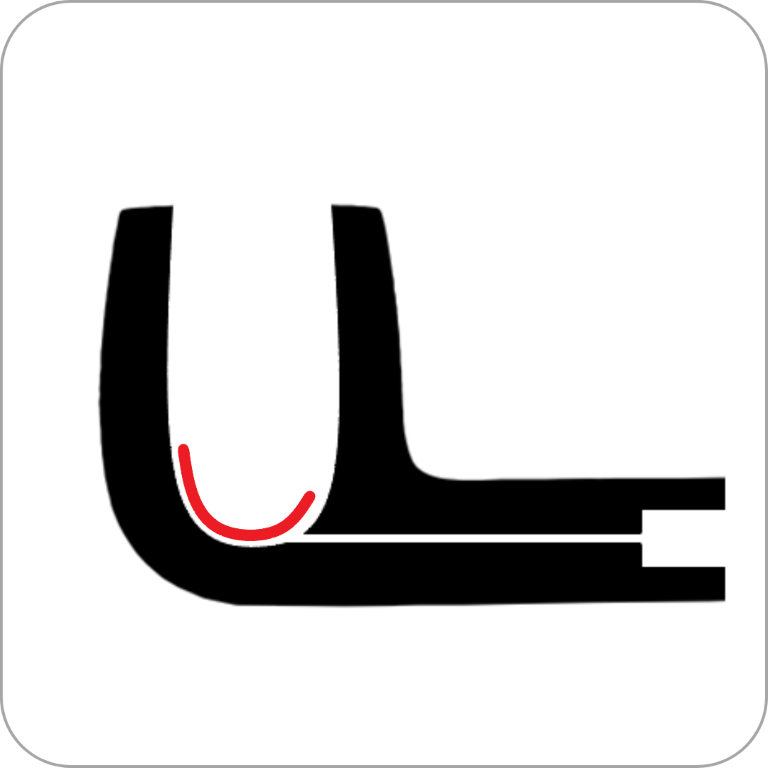
Horn
A Horn shape is defined by the absence of any hard lines or angles. The entire pipe is one large curving taper towards the stem. The only lines on a Horn pipe are the angles at the chamber rim.

I
Izmir
One of the more common Oriental sub-varietals, Izmir leaf is synonymous with Smyrna. Izmir is named after the region in which it is grown. Overall this tobacco has a strong flavor, but has a low nicotine content and smokes very cool. Izmir is one of the few Oriental sub-varietals obtainable as an blending component that isn't a mixture of different Orientals. Cornell & Diehl for instance offer Izmir Turkish as part of their Blender's Series.
See: Sourcing Orientals

J
Jatim
Jatim is a pure Indonesian tobacco. The name Jatim comes from a combination of the regions in which it is grown, Jawa Timur. Jatim is a common component in cigarette tobaccos and is sometimes used as a supplemental flavor enhancer in pipe tobacco.
Joint
Googling a phrase like tobacco pipe joint brings you to different search results than most of us want. When pipe makers refer to the joint they are talking about one of the oldest practices in woodworking. For pipes, the joint is the point where the mortise accepts the smaller tenon.
The mortise-and-tenon joint is a common type of woodworking joint. It has been in use almost since wooden tools first began. This type of joint is created when two pieces fit together to form one whole piece. The precision required to construct the joint is often one of the most difficult part of making a pipe.
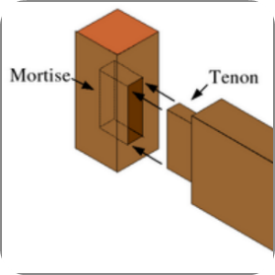
K
Kabakolak
At the most basic level, Kabakolak is a classification or family of tobacco. It is a cross between Bali and Basma. Kabakolak is different from other tobaccos because the stem extensions that cover the natural curvature of the leaf much farther out than a regular tobacco plant.

Katerini
This component is generally used in small quantities as a flavoring component. Katerini is grown in the Greek province of Macedonia. Katerini is known for being a mild and sweet Oriental tobacco. Although the Oriental component in blends is usually a mixture, some pipe tobaccos utilize straight Katerini. Katerini was put through the Perique process for the first time to be blended into two mixtures in Sutliff's Birds of a Feather series.
See: What is Perique-Processed Katerini? // The Making of Sutliff's Birds of a Feather Series
Kentucky
Kentucky tobacco is usually referred to as “ Dark Fired Kentucky.” This is made by gathering a select crop of Burley, hanging it over a fire and allowing it to cure in the smoke. This gives the tobacco a smoky flavor. Like the other infamous fire-cured Latakia, Kentucky is added in small quantities to a blend, as it's a potent condiment and a little goes a long way. However, it is not fire-cured nearly as long as Latakia.
L
Latakia
Latakia is named for the port city in Syria where it originated. Latakia is made by fire-curing Oriental tobacco over specific woods. You may hear the terms Syrian Latakia or Cyprian Latakia. All Latakia being manufactured today is Cyprian, making old tins which used the Syrian variety especially valuable.
Liverpool
The Liverpool shape is a deviation from the Canadian and sports a shank that is one and a half to twice as long as the chamber is tall. To separate a Liverpool from other long shanked pipes, look at the stem and shank, Liverpool’s have a round cylindrical shank and a tapered stem.
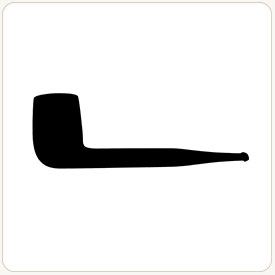
Lovat
A Lovat’s shank is roughly one and a half times longer than the height of its bowl, and is seldom longer. The Lovat originated when a pipe carver decided to extend the shank of a Billiard (into a Canadian) and give it a saddle bit stem.

Lumberman
The Lumberman is an esteemed member of the Long Shank pipe club. In order to be considered a Lumberman, the pipe must have a Billiard bowl, and then be given a shank that is one and a half to two times longer than the bowl’s height.

Lucite
Another term for Acrylic.
Luletasi
This is the Turkish word for “meerschaum”.
M
Mahale
Mahale is an Oriental sub-varietal. It has a fine leaf, decadent aroma, and delicious medium flavor.
Maryland
Maryland is strand of American pipe tobacco. It is less popular than Burley or Virginia. Maryland tobacco is a very mild mixture. It is used to sweeten and add a nutty flavor to American tobacco blends. Unfortunately, due to legislation this tobacco is produced less and less in the state of Maryland.
Meerschaum
Chemically, meerschaum is a complex material. Technically this clay-like material is hydrous magnesium silicate, or sepiolite for short. Genuine meerschaum is found almost solely in Turkey near the Black Sea. When wet, meerschaum is easy to carve, which is what allows it to be the material of choice for the most meticulous carvers in the world. A meerschaum pipe is difficult to burn out, absorbs heat and oil effectively from the tobacco, and turns a beautiful brown/bronze color as it is smoked. When hot, meerschaum is extremely fragile and can easily shatter if dropped from a low height. Meerschaum means “seafoam” in German.

Melding
Melding, or "marrying," refers to the process that happens as a tobacco blend ages over time, each different component in the blend begins to take on the flavors of the others. As time goes on, the flavor in the tobacco becomes more and more consistent.
Mellowing
Mellowing is a term that refers to tobacco’s natural tendency to become less potent while aging. A mellow tobacco is a smooth tobacco.
Military Mount
Another term for Army Mount.
Morta
Second only to briar wood, morta is the most prized wood material for tobacco pipes. Morta is harvested from trees that fell and were submerged in bogs. The wood, while being buried for around 5,000 years, becomes petrified by the acidic and anaerobic conditions of the bog. Morta is a nutrient rich material, which causes it to be quite resistant to fire. The natural dark color and magnificent grain make it a favorite of artisan pipe carves. The hardness of Morta and its propensity for imperfection make it especially difficult to master for a carver, making Morta pipes all the more special.

Mortise
The mortise is the hole drilled in the shank to take the tenon, making the joint.
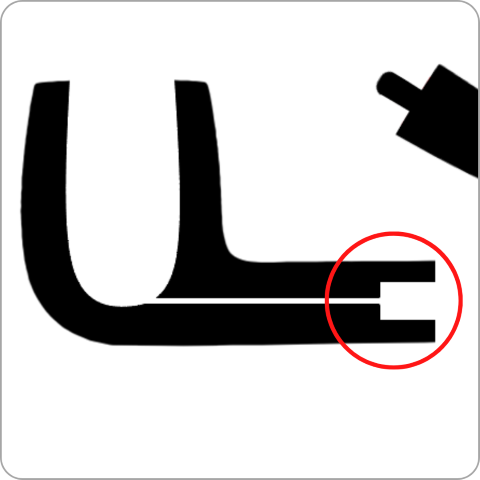
Mouthpiece
This is a more general term than stem or bit. The name more or less describes itself, as it's the part of the pipe designed to go in the mouth of the smoker.
N
Nautilus
There are only two defining features of a Nautilus shape pipe. First of all, there can be no definitive angles or hard lines. Second, the shank must curve back and rejoin the upper half of the bowl, leaving an absence in the middle of the pipe.
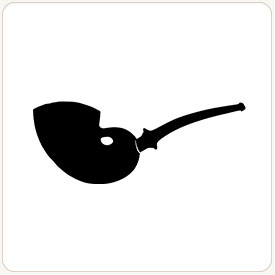
Nomenclature
This term is used is many different trades and refers to the stamping, branding, or other identification mark on an object. For a tobacco pipe this can be a logo on the stummel, a stamp on the band, a laser printed design, or other image or mark that designates the the brand and often more specific information, such as the range or shape number. For estate pipes, these markings can be useful for dating a pipe as the designs and stamping conventions can change over time.
Non-Aromatic
Non-Aromatic tobacco blends are blends that have little-to-no topping. The lack of topping makes so the natural tobacco flavor is most prominent in the flavor profile. Naturally, the line between an "Aromatic" and "Non-Aromatic" is subjective, as there are plenty of blends which employ a top flavoring, though sparingly enough that two pipe smokers many categorize it differently.
This "top-flavoring" however is different than casing, which is usually sugar, honey, or another simple, light flavoring which smooths and balances the natural tobacco. Most all blends use some casing.
See: Best Smelling Pipe Tobaccos (Top 10 Non-Aromatic Mixtures)
Nose Warmer
A Nose Warmer is a pipe with a short shank and stem. It is called a Nose Warmer because when lighting the heat can sometimes warm the tip of your nose. This shape-specific title of this pipe is the Stubby.
O
Olive Wood
Olive wood is experiencing something of a renaissance in the hands of artisan carvers. The wood of the olive tree has been used for pipe construction for a long time.
As you might guess, olive wood comes from the wood of an olive tree. Because olives are prized for their food value, they are not felled for lumber often. This means that olive wood pieces are usually small. They come from pruned branches, trimmings, and sometimes from damaged trees. These smallish pieces are perfect for making pipes.
Olive wood has a distinct scent. Many pipe makers believe that the properties of the wood’s oil can add to the experience of smoking a pipe. Olive’s grain is distinct. It creates stunning pieces in the hands of talented pipe makers.
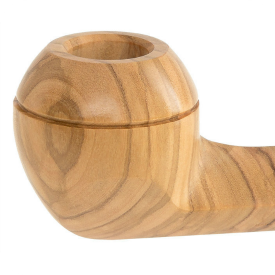
Oom-Paul
The Oom-Paul, sometimes referred to as Hungarian, is a full-bent Billiard shape. These are often appreciated for their downward weight distribution allowing them to be comfortably clenched, even with a large capacious chamber. Oom-Pauls will also often feature a flat bottom that allows the pipe to sit without a pipe stand.

Oriental
Oriental tobacco, or Turkish as it's often called, are generally grown in the greater Mediterranean region. Oriental tobacco is sun-cured, allowing the leaf to retain some of its natural sweetness—not as much as the flue-cured Virginia, but more than the air-cured Burley. Though all Oriental tobaccos are similar, there are many sub-varietals that have nuanced qualities of their own. However, most often the Oriental component in a blend today is a mixture of these sub-varietals.
See: Sourcing Orientals
Oval Chamber
Where most pipes have a perfectly circular chamber, the Opera pipes, another name for the Oval, has an oval shaped chamber. This style of chamber is most often used on Churchwarden and Vest style pipes.
P
Panel
Panel shaped pipes are closely related to the Billiard. The difference between the Panel shape and Billiard shapes are the contours of the outside of the chamber and shank. A Panel will have no less than four flat sides on the bowl, and can have up to eight, all running perfectly perpendicular to the next.

Passing a Pipe Cleaner
When someone refers to a pipe's ability to pass a pipe cleaner, they meant that one can feed a pipe cleaner through the pipe in question from the slot all the way through to the chamber without taking the pipe apart. This is desirable to clean out the pipe during or immediately after a smoke, because separating the stem from the shank can be detrimental to a pipe while it is still hot.
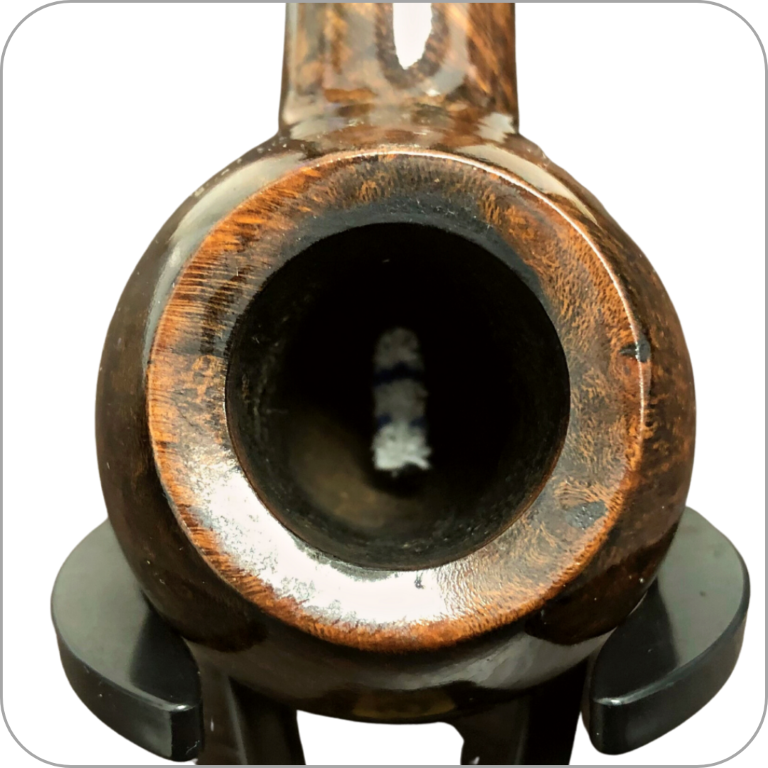
Perique
True Perique tobacco is grown in only one place: St. James Parish, Louisiana. However, that particular type of Burley tobacco isn't Perique until it goes through a particular process of pressure fermentation. For long periods of time the leaf is packed into barrels that are pressed with tremendous pressure. The leaf ferments in its own juices, being flipped every so often. This processes produces a full-flavored potent tobacco prized by pipe smokers.
Much of Perique today is a mixture of the St. James Parish Burley and a similar strand, Green River Burley, resulting in what is called Acadian Perique. However, some blends do still use genuine St. James Perique.
See: A Quick Background on the Perique Process
Pipe
For our purposes, a pipe is a tube with a small hole on one end, and a larger hole on the other end. It is used to smoke tobacco.
Pipe Cleaner
Most people know a pipe cleaner as the bendy arts and crafts material in elementary school masterpieces. Most probably don't even consider that it's name is inherited from, well, exactly what it sounds like. But the colorful art supply isn't quite what we use, even if the difference only seems to be the color at first glance. Our pipe cleaners are for feeding through the pipe to clean it out during and/or after smoking, but there are several types to accommodate different pipes and circumstances: fluffy, tapered, extra thin, extra long (for those churchwardens), bristled.
Pot
The Pot shape is the shorter, more adaptable version of a Billiard. A Pot is born when a standard Billiard pipe loses the top section of the bowl somewhere in the area of one third the total height of the bowl. A Pot usually has a wider diameter chamber than the Billiard.

Prince
The Prince is a the longer, flattened version of an Apple. To get a Prince, take an Apple pipe, squash the bowl slightly, shorten the length of the shank—usually down to three quarters of the height of the bowl—keep the cylindrical shape of the shank, and add a lengthened slightly curved stem.

P-Lip
The P-Lip is a patented design specific to one brand: Peterson of Dublin. A P-Lip is a stem that has an air hole on the top of the stem, rather than on the end. This redirects the ribbon of smoke away from the tongue, which decreases tongue bite.

Plug
A plug cut and crumble cake are sometimes used interchangeably, but traditionally, a plug is made from pressing whole leaf tobacco together. Often the tobacco is aged for a period of time before packaging in this pressed brick shape. You'll generally want to have a knife to prepare a plug. With pressed ribbon, any area you pull from will have the same ratio of ingredients more-or-less, but with whole lead, you want to slice down the side, through the layers.
That said, some tobaccos called plug today are pressed ribbon.

Poker
The Poker pipe is the most famous and most smoked sitting pipe in the world. The outside appearance of a Poker is a perfect cylinder with a miniscule forward cant. The chamber will be cylindrical.
R
Reaming/Reamer Tool
This is the process of removing the carbon build up, or “cake”, from the inside chamber of your pipe. Most pipe smokers opt to keep a thin cake lining their chamber of their briar pipes, but you don't want too much build up, which is where reaming comes in.
There are several varieties of reaming tools one might use to trim the cake in their pipe.
See: How to Ream a Tobacco Pipe
Rhodesian
A Rhodesian traditionally has a cylindrical shaped shank. The double conical shape and twin bead lines are the same on a Rhodesian as they are on the Bulldog. A majority of the time the Rhodesian will have an eighth to a quarter bent shank and stem, but can periodically be found in a straight design.

Ribbon
The term ribbon refers to a style of cutting tobacco. Ribbon is long and thin strips of tobacco.

Room Note
The room note refers to the unique aroma that a particular tobacco emits into the room in which you are smoking.
See: Best Smelling Pipe Tobaccos - Top 10 Aromatic Mixtures - Top 10 Non-Aromatic Mixtures
Rotation
A pipe rotation is the practice of spacing out the smoking of a pipe to make sure it gets rest time between smokes. This may be done with some sort of systematic routine, such as assembling a seven day set to have a pipe for each day of the week, or a more casual approach, of simply being cognizant of spacing out pipes between smokes without much of a structure to it.
See: Pipe Rotation: A Comprehensive Guide
Rubbed Out
Smokers often refer to “rubbing out” a tobacco when working with a flake, plug, cake, or coin style tobacco. A “rubbed out” tobacco is one that has been agitate with the fingers, breaking it apart into finer strands.
Rusticated
A pipe’s surface is described as being rustic when the stummel has been given some texture other than smooth or sandblasted. Pipe makers generally go for a rusticated finish when cosmetic flaws result in a stummel not being suited for a smooth finish, and the grain orientation doesn't lend to an attractive sandblast.

S
Saddle Bit
The saddle bit-style stem is designed to make a pipe more comfortable when being clenched in the mouth. The stem generally moves away from the joint with the same dimensions as the shank before abruptly coming together, as if pinched at the top and bottom, creating a wide, thin, flat stem down to the button. The saddle bit is distinct from a tapered stem which will gradually taper from the joint, or slightly beyond, down to the button.

Samsun
This Oriental tobacco is grown around the town of Samsun, Turkey. Used more often in cigarettes, this tobacco has a very low nicotine level. The Samsun tobacco plant has a famous heart shaped leaf, and when aged turns a very dark color, emitting an exotic flavor.
Sandblast
This is a process that pipe makers use to add texture to the stummel of a pipe. High speed blasts of sand or another material in a controlled environment strip away the softer layers of wood, usually briar, leaving the harder ribbons. This typically creates a beautiful wavy patterned finish.
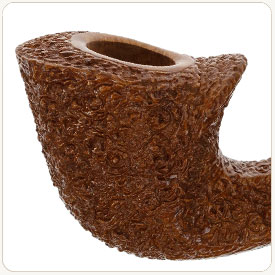
Scottish
The term Scottish, English, and Balkan terms are quite muddled and many pipe smokers who use these distinctions will have their own interpretations. However, compared to the others, a Scottish blend contains less Latakia, a larger portion of the secondary component Virginia, and little to no Oriental, and often include Black Cavendish. However, the label can be seen applied to a vast diversity of blends with different leaf make ups. Of the narrowed English adjacent styles, Scottish seems to be the most vague.
Screw Stem
The screw-style stem is not so much a shape or style of stem as a classification based on functionality. Many smokers love this style, because it is easy to repair--if the tenon breaks, it is easily replaced by another threaded tenon. On a screw stem, the tenon is threaded and inserts into a matching threaded mortise. The easiest way to picture this stem is as a nut and bolt. Pipes with a screw stem can have any stem shape, tapered, saddle, or a random freeform design. A stinger is often paired with a screw stem to assist in reducing the gargle of moisture which may collect in the shank.
Seven-Day Set
A 7-Day Set is considered a complete beginner’s collection by many pipe smokers. The idea is to have a different pipe for every day of the week. This allows the smoker to rest their pipes for a full week before smoking them again.
Most modern smokers don’t consider it necessary to allow a pipe to rest for an entire week. However, it’s still a great idea if your collection is large enough to allow it.
Shag
Shag cut is a tobacco blend that has been very finely cut, even more fine than ribbon. Shag is often bought as a cigarette filler for smokers who roll their own cigarettes.

Shank
The shank is the portion of a pipe in between the bowl and the stem. It is typically made from the same solid piece as the stummel.

Shirazi
The majority of Shirazi tobacco is primarily used as a filler for cigarettes, but is quite popular in the pipe tobacco blending sphere. Shiraz tobacco was brought to Shiraz, Iran, the city it was eventually named after, from the Americas in the 16th century.
Sitter
The Sitter pipe is not so much an individual pipe shape as it is a classification for shapes. A pipe that is referred to as a Sitter is a pipe that stands upright on its own due to a flat foot or shank.
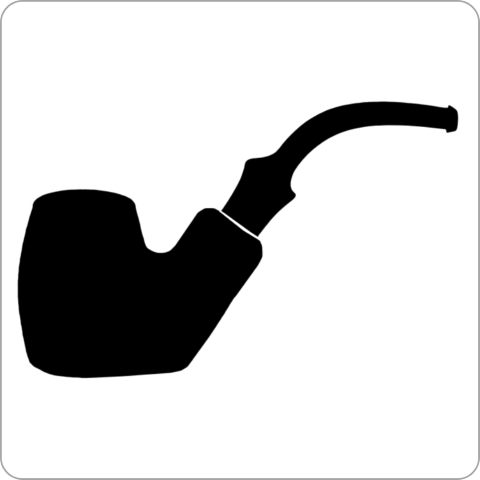
Slot
The slot is the widened air hole near the front of the stem. Generally acrylic and vulcanite stems have a bore that tapers going down towards the pipe--this is the slot. The purpose of a slot is to improve the smoothness of the air flow and make it easier to use a pipe cleaner.
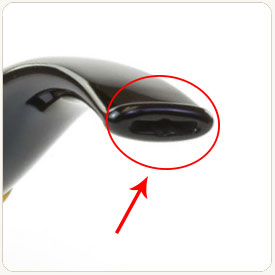
Smyrna
This tobacco leaf is grown around the Izmir region, and is often called Izmir, in Indonesia. Smyrna is a naturally strong flavored tobacco, but has a low nicotine content compared to its strength. In pipe tobacco, Smyrna is typically used as a supplemental flavor enhancer, but can occasionally be found as the base tobacco in a blend. It is a very cool smoking blend.
Soppeng
Soppeng is an Indonesian tobacco and seems to be the Oriental equivalent to Cavendish. Palm sugar is added to Soppeng to sweeten the taste, and the tobacco is then fired. Often times the finished leaf is stored in bamboo palms, which furthers the sweet flavor. Soppeng is most often smoked in cigarettes, but is commonly found in pipe blends.
Spider Webbing
Spider webbing is another not-so-consistently applied term, which can be used to describe the charred texture on the inside of a chamber that may be an early sign of burn out (such as pictured below). But you may also hear spider webbing in reference to the cracking of the (often lacquered) finish on the outside of a bowl.
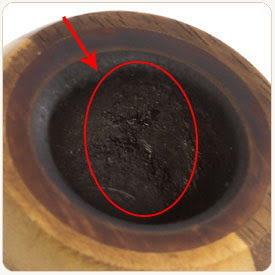
Spigot
This is the name for the meeting between an army mount tenon and shank, both of which are coated in metal.
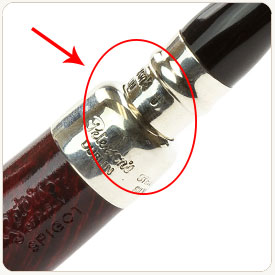
Spur
The spur is most often seen on a cutty shaped pipe and long clay pipes. These have long been a staple of clay pipes, offering a convenient place to hold the pipe, as clay easily get very hot while smoking.
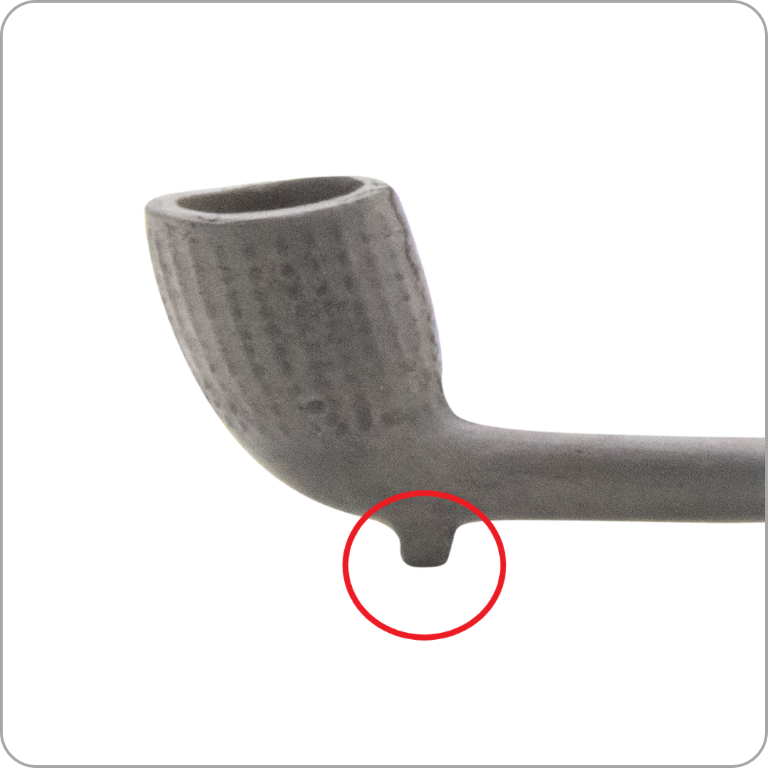
Srintil
This is a strong and potent breed of tobacco. Srintil is grown primarily in the Java region Temanggung Regency in Indonesia. To make Srintil only the top portion of the tobacco plant is harvested, the more potent and oily section of this particular plant. It is then air cured and allowed to ferment for varying times. Yearly yield is only around three tons. Srintil is most easily understood as the Asian equivalent of Perique.
Stain
A tobacco pipe's stain refers to the color of the wood after being dye or oiled to achieve the intended color. A pipe's stain can play an important role in bringing contrast to the natural beauty of briar's uniquely attractive grain. It can also add dimension to rusticated pipes, often as a contrast stain.
Stem
A stem is the part of the pipe that you put into your mouth. It extends into the shank of the pipe.
Stinger
A stinger is commonly called a "condenser" or "metal filter." The stinger fits inside the tenon and extends into the shank of the pipe. The purpose of a stinger is to reduce the moisture when smoking. However, these are uncommon in contemporary pipe making, and are often removed from estate pipes, as modern smokers seem to place a higher importance on a pipes ability to pass a cleaner, which stingers do not allow.
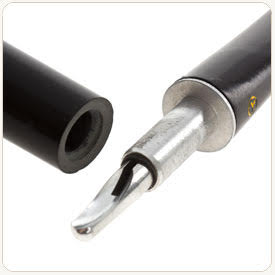
Straight
A pipe is deemed as straight when there is no bend or curve in the shank or stem of the pipe. The bowl of the pipe can have a forward or backward cant and still be deemed a straight pipe.
Straight Grain
Straight grain is just what it sounds like, when the grain on a pipe runs straight, almost parallel. It may seem as being mindful of the grain orientation when carving a pipe to achieve this, but it's not that simple. Yes, the orientation is important, but briar is a natural material, and as such, doesn't often form to our aesthetic preferences. A carver really can't be sure how that grain will be or what flaws may be waiting inside a block of briar. Although, straight grain has no affect on the smoking quality of a pipe, its rarity and dependance of both skilll and luck for the carver makes them especially valuable.
Stubby
This pipe, which is based off of a Billiard, is a portable pipe, perfect for smoking on the go. This is because of its standard shaped bowl and relatively short stem. This pipe is often called a Nose Warmer.

Stummel
The stummel refers to the total pipe minus the attached stem. This includes the shank, bowl, chamber, and other materials that make up the end of the pipe opposite the stem.
Sun Cured
Sun curing tobacco is a method of drying tobacco after harvest which involves the leaves drying in the sunlight. Sun curing is most readily associated with Oriental tobacco. With this method, the sunlight and heat allows for a moderate retaining of the natural sugars—not as much as flue curing, but more than air curing.
T
Tambolaka
This tobacco takes its name from the region in which it is grown, Tambolaka on Western Sumba, an island in the Indonesian archipelago. What gives this tobacco its high nicotine content, strong flavor, and potent aroma is the limestone rich soil the tobacco is grown in. What is unique about Tambolaka is that when harvested it is rolled into long sticks and stored to age for around five years.
Tamper
A tamper is a generic term used to describe a tool that a pipe smoker uses to push the burning ash downs towards the base of the chamber while smoking. This tool is necessary because the burning tobacco must be periodically pushed down so that it comes in contact with the unburning tobacco below it.
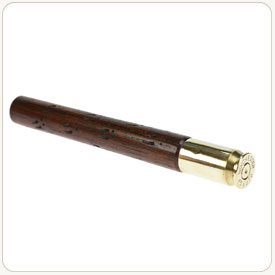
Tankard
Another pipe from the Sitter family, the Tankard shape has a slightly larger diameter at the foot than at the chamber rim, however, the chamber remains perfectly cylindrical. The base is flat so that the pipe can easily sit without a pipe stand.
Tapered Bit
The tapered stem is one of the most common stem styles. Carvers and smokers love this stem because it is traditional, easy to make, and has the option of a large bore. A tapered stem has a tenon that is securely held in the mortise. The tapered stem is thickest where it meets the shank, and smoothly tapers narrower toward the bit.

Tenon
The tenon is the protruding piece of the stem that is inserted into the shank or stummel of the pipe. Tenons can be made from many different materials, including metal, acrylic, vulcanite, derlin, and others. Some tenons are threaded and screw into the stummel of the pipe, but the screw style is less common in modern pipe make, save for meerschaum pipes.
See: A Guide to Pipe Stems - Anatomy
Tin Note
The phrase tin note is used in reference to the specific aroma of a tobacco blend when you open the seal or lid of the tin. You may hear similar terms like "bag note" that mean the same thing, just amended depending on the packaging.
Tomahawk
The Tomahawk shape features a pointed base of the bowl. The angle created by the point and steep bend resembles the ancient weapon. Really, these are the only defining factors of the Tomahawk.

Tomato/Ball
It is quite apparent why the Tomato is named as it is. Sometimes, when the pipe is called a Ball, it is because the spherical shape of the bowl is readily apparent, not so much that it has a different design. It is up to the artist to decide, for there is no significant difference in design.

Topping
Topping is another name for flavoring or top flavor, which is applied at the end of the blending process, mostly in the case of Aromatic blends. This is a flavoring other than the tobacco and the casing, which is a more neutral outside flavoring that is applied earlier in the process. When you have blends that tout flavors such as cherry, liquor, vanilla, and the like, that would be the "topping." Again, this is usually a process for Aromatic mixtures, but some blends have subtle top flavorings and may or may not be considered Aromatic depending on who you're asking.
There are two homonyms for this definition that are less common, but still may be used in the tobacco and pipe world. You may hear topping in reference to the cultivation side of things—it is the removal of the tobacco flowers before suckering (pruning out) excess leaves.
Topping also may refer to the process of sanding down the rim of a pipe. This is done for the purpose of pipe restoration, usually when the char or thinning of the rim is so bad that some of the rim surface must be removed and leveled. This is avoided if possible—one of guiding rules for most pipe restorers is to remove as little material as possible.
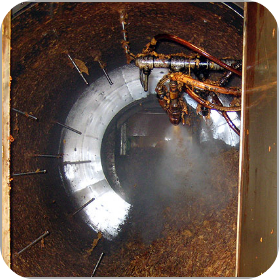
Trebizond
Another Oriental tobacco, Trebizond is grown in Turkey and resembles Samsun. Trebizond leaf is coarse in texture and light in color.
Turkish
Another term for Oriental tobacco.
Twist
Another term for Coin Cut.

U
Ukulele
The Ukulele—sometimes called an “Eskimo” or “Snow Cone”—may be considered part of the Bulldog family given its bowl shape. The Ukulele has the same cone shaped bowl, length, and squashed design of other members in that family, with the exception of the bead lines.

V
VaPer
VaPer refers to a combination of Virginia and Perique tobacco. It may also be referred to as a Virginia/Perique blend, but you'll most often see the abbreviated spelling.
This combination is treasured by smokers. Like most of our pipe blend genres, there aren't hard roles, and some VaPers may contain other varietals and test the tidiness of the classification.
Vest
A Vest pipe is a unique shape that was designed for convenience. The short stem swivels, which allows the pipe to easily be stored in a pocket. The rounded base of the bowl is built to easily slide into a vest pocket for easy, safe-keeping. Finally, the short bent design of this pipe makes it easy to clench.
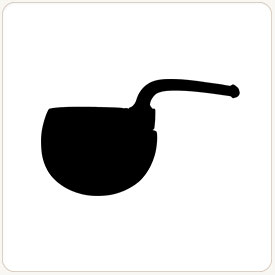
Virginia
Virginia tobacco is perhaps the most common varietal for pipe tobaccos. It's central to many mixtures and blend styles, and is one of the only tobaccos to be commonly used for "straight" blends—i.e., a mixture that is only different Virginias. Often called bright leaf, Virginia tobacco is famously flue cured, resulting in a higher sugar content. This high sugar content makes Virginia leaf especially appreciated for how it ages.
You may hear the terms bright/yellow Virginia or red Virginia. These refer to the same tobacco type, but the Virginia leaf will lean into different aspects of what we might call the "Virginia flavor" depending on the lead's position on the stalk.
Despite the name, Virginia tobacco isn't only grown in the commonwealth of Virginia—it isn't only grown in the American bright belt for that matter.
Volcano
The Volcano shape consists of a conical shaped bowl that widens closer to the base of the pipe. The foot is either flat or rounded. Volcano pipes have a small diameter rim. Because the chamber will typically have a perfectly cylindrical shape, the chamber walls thicken from the rim down towards the foot. The Volcano will almost always have a bent stem.

Vulcanite
Vulcanite is a hardened rubber. Alongside acrylic, Vulcanite is a preferred stem material by many pipe makers. It is very soft compared to other acrylic, but may oxidize easily depending its quality.
W
White Burley
White Burley refers to Burley leaf that is light compared to its counterpart, Dark Burley. White Burley is harvested from the central stalk and is thinner with a lighter flavor and nicotine content than the upper stalk leaves. Dark Burley's thickness also allows it to go through a second fermentation process—another difference between the two types. But like all Burley, White and Dark are air cured.
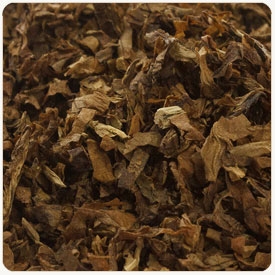
X
Xanthi
Another of the Oriental tobacco family, Xanthi is a leaf that falls into the classification of Basma tobacco. The leaf is named after the region in which it is primarily grown in Greece. Xanthi is a tobacco that has a particularly strong and pleasant aroma.
Y
Yenidje
Yenidje is considered one of the most prized Oriental tobaccos. This leaf is named after the town Yenidje where it was once grown. This tobacco has a relatively low nicotine content and smoky flavor. Yenidje does not burn well on its own, so it is used as a supplemental flavor enhancer in blends. Most famously it was used in the notorious Balkan Sobranie. These days it is scarcely if ever seen as a discrete Oriental component in a blend.
Z
Zebrawood
Zebrawood refers to any number of tropical tree species. This wood is defined by a light and dark striping grain, which just so happens to look like the stripes of a zebra. This material is commonly used as a band around the shank of a pipe.
Zulu
A Zulu bowl has a conical shape that tapers down to a smaller chamber diameter toward the bottom. However, the Zulu often has slightly thinner chamber walls than other pipes, giving its light design. Usually the bowl has an obvious forward cant. It is the bend of the Zulu that defines it. Unlike most bent pipes, the Zulu has a straight shank, which leads to a subtle bend in the stem.
